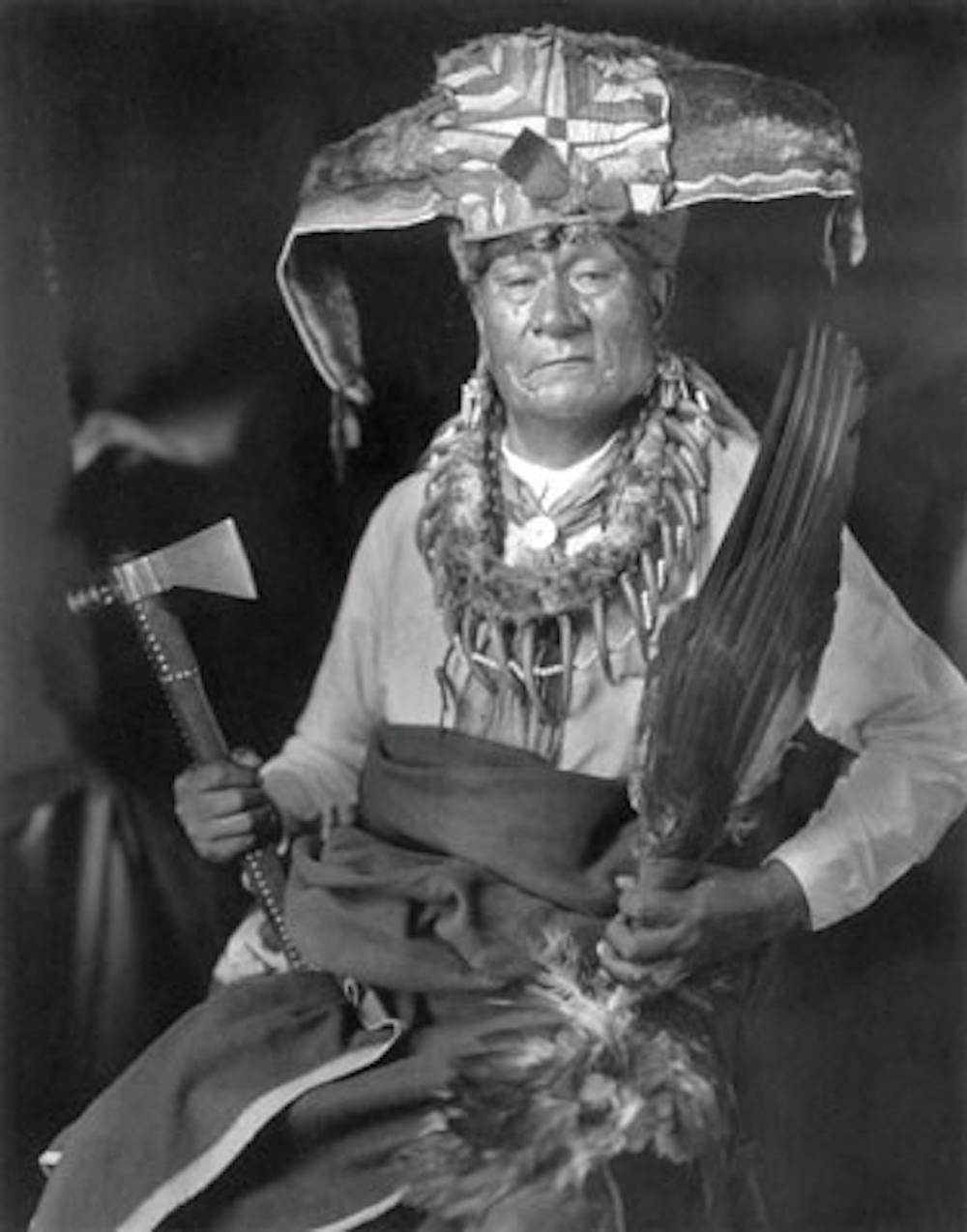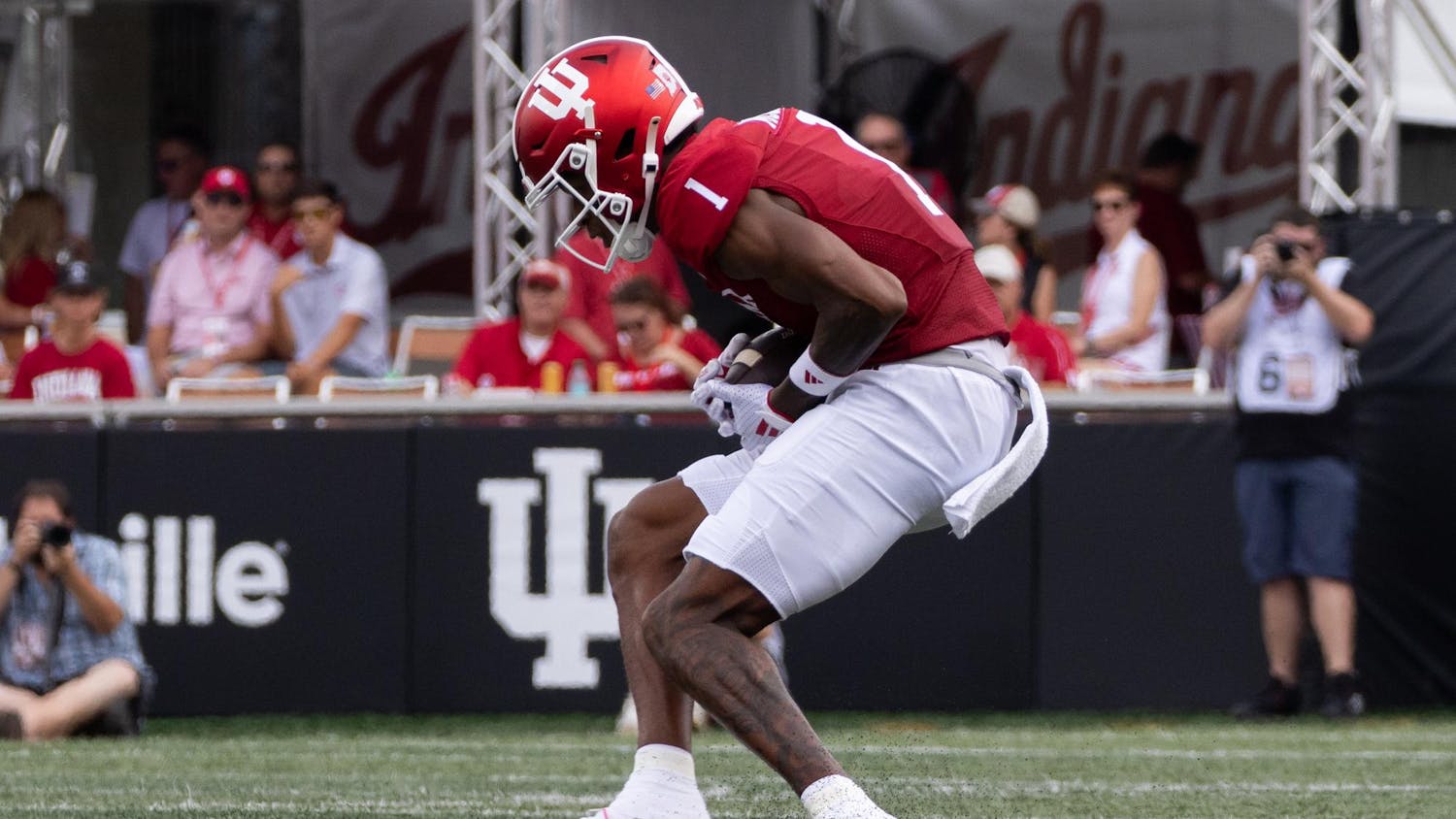At first, the viewer sees the basic components of the photograph: an American Indian man, shown from the knees up, sitting down and staring directly into a camera lens. Then the details start to appear. The man is tightly gripping a tomahawk in one hand. Around his fur necklace hang long, bearlike claws pressing in his shirt. The wrinkles delving deep into his face suggest a life of experience and struggle. \n“This image is so striking,” said Judith Kirk, assistant director of the Mathers Museum of World Cultures. Of the photograph, which depicts Captain Jim of the Otoe tribe, Kirk said, “It’s a posed image, yet he was the sort of person who wouldn’t let you tell him what to do.”\nThe picture of Captain Jim is one of 150 images in the exhibit “Images of Native Americans: The Wanamaker Collection,” on display at the museum until June 8. Like the picture of the Otoe chief, the photographs allow visitors to see past the basic components and into the details of American Indian life.\nThe exhibit presents a small component of the IU’s Wanamaker Collection, which includes more than 8,000 images of American Indians made between 1908 and 1923, according to the Mathers Museum Web site. Primarily photographed by Joseph Dixon and sponsored by Rodman Wanamaker, son of a Philadelphia department store owner, the collection depicts individuals from over 150 tribes.\n“The more you dig, the more you find,” Kirk, also the exhibit’s curator, said of the collection, which also includes pamphlets, notes and biographical information about the photographed subjects. “It’s a treasure.”\nKrissy Fries, a junior majoring in museum studies, did a practicum at the museum this semester and helped install the Wanamaker exhibit. She said the exhibit looks at many different facts of the lives of American Indians without presenting the Western cartoon view of their cultures.\n“I’m thrilled with (the exhibit),” Fries said. “The pictures are stunning and the whole room works well together.”\nWhile sections in the exhibition like “Families and children” and “Portraits” do offer the viewer a broad look at American Indians, “Images of Native Americans” as a whole lies beyond the photographs themselves.\n“The exhibition explores the context of the images through a discussion of their history and the individuals involved in their creation,” a sign in the exhibit read. “An examination of the types of images in the collection and analysis of the collection’s problems and potential are also presented.”\nStereotypical imagery in the collection is one problematic aspect that the exhibit portrays. \n“These images represent a specific viewpoint,” an exhibit sign titled “Stereotypes and Staging” read, “that Native Americans were disappearing and with them, their culture.”\nThe photograph titled “The Sunset of a Dying Race” shows an example of this stereotyping. Depicting an American Indian man looking into the distance as he sits atop a horse on a grassy plain, the image includes photographic manipulation to reinforce the notion of the disappearing American Indian, according to the sign.\nWhether they are admiring the aesthetic beauty of the photos or recognizing the diversity and similarity between the American Indian cultures and their own, Kirk said, visitors can learn from viewing these images.\n“Most people walking through the exhibit will find some reason personally for why they have meaning,” she said.\nFor more information on the exhibit, contact the Mathers Museum at 855-6873. Admission is free.
Exhibit offers glimpse into life of American Indians
Small portion of 8,000 images on display at Mathers

Get stories like this in your inbox
Subscribe





